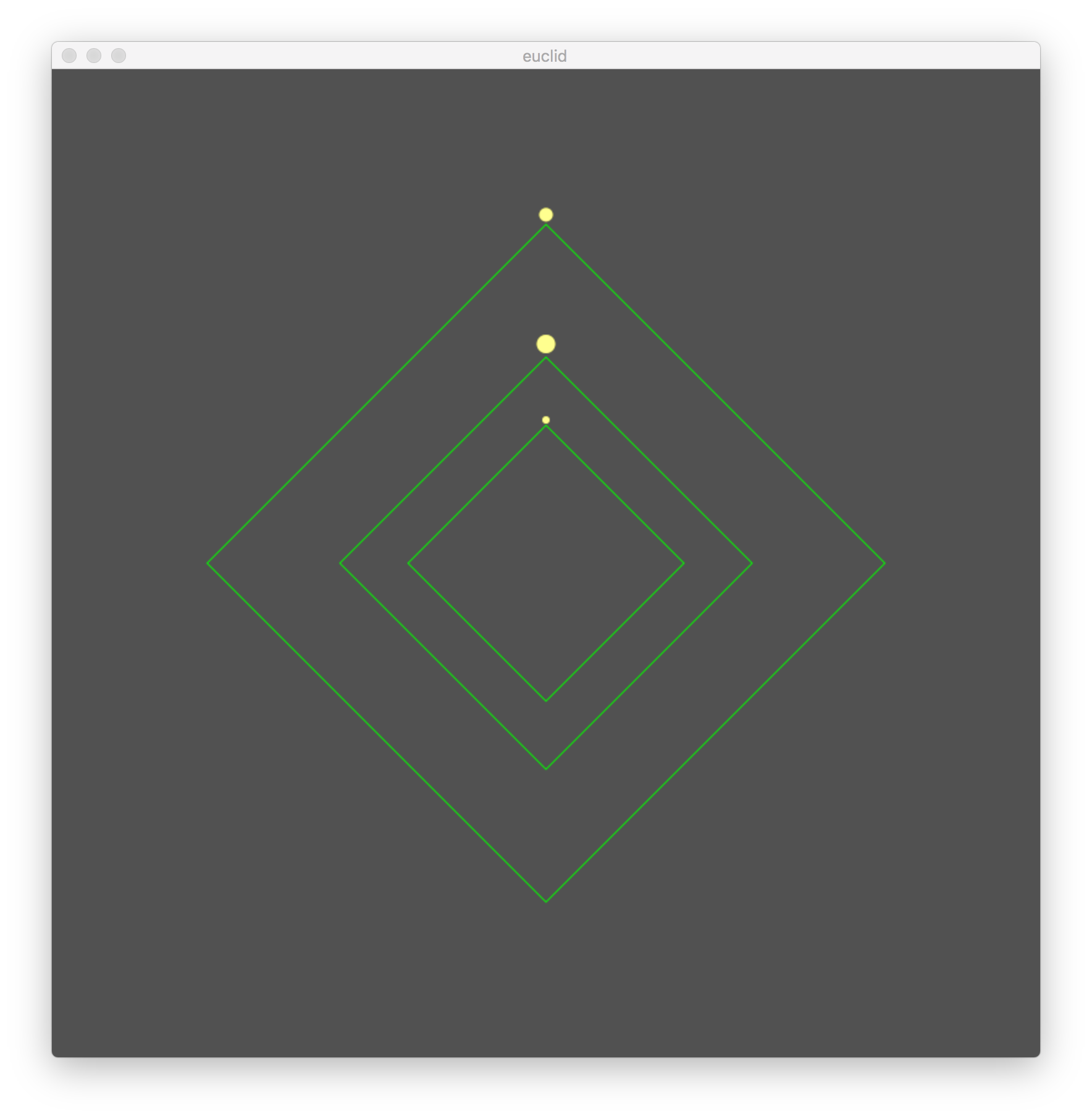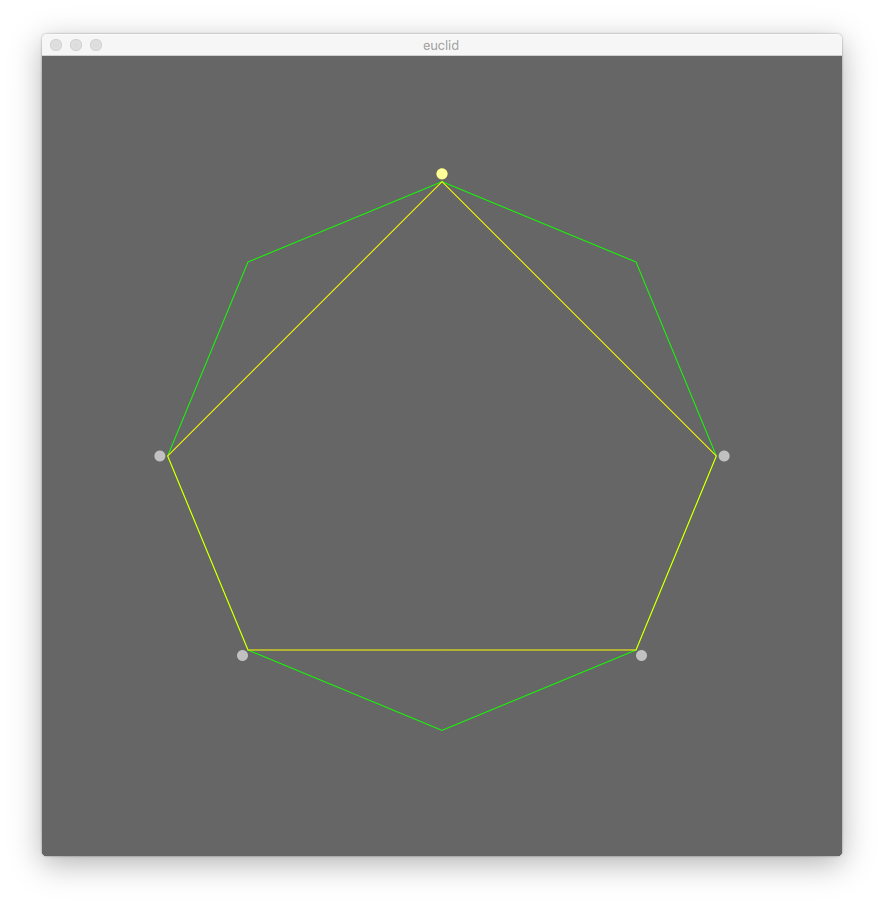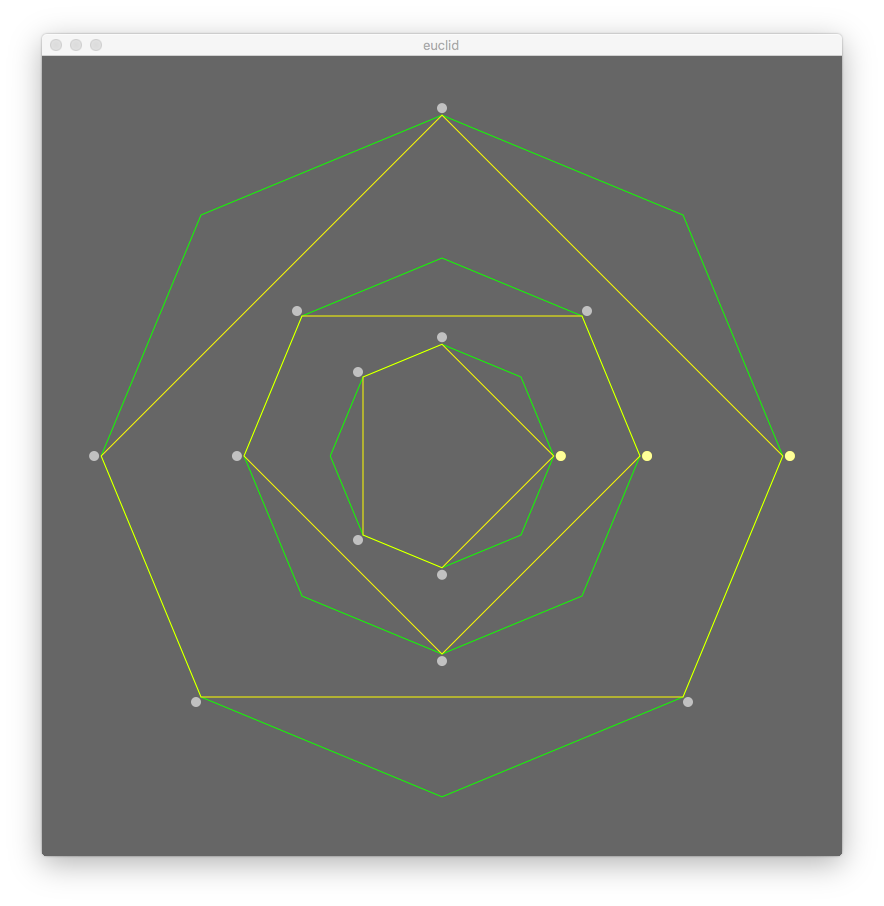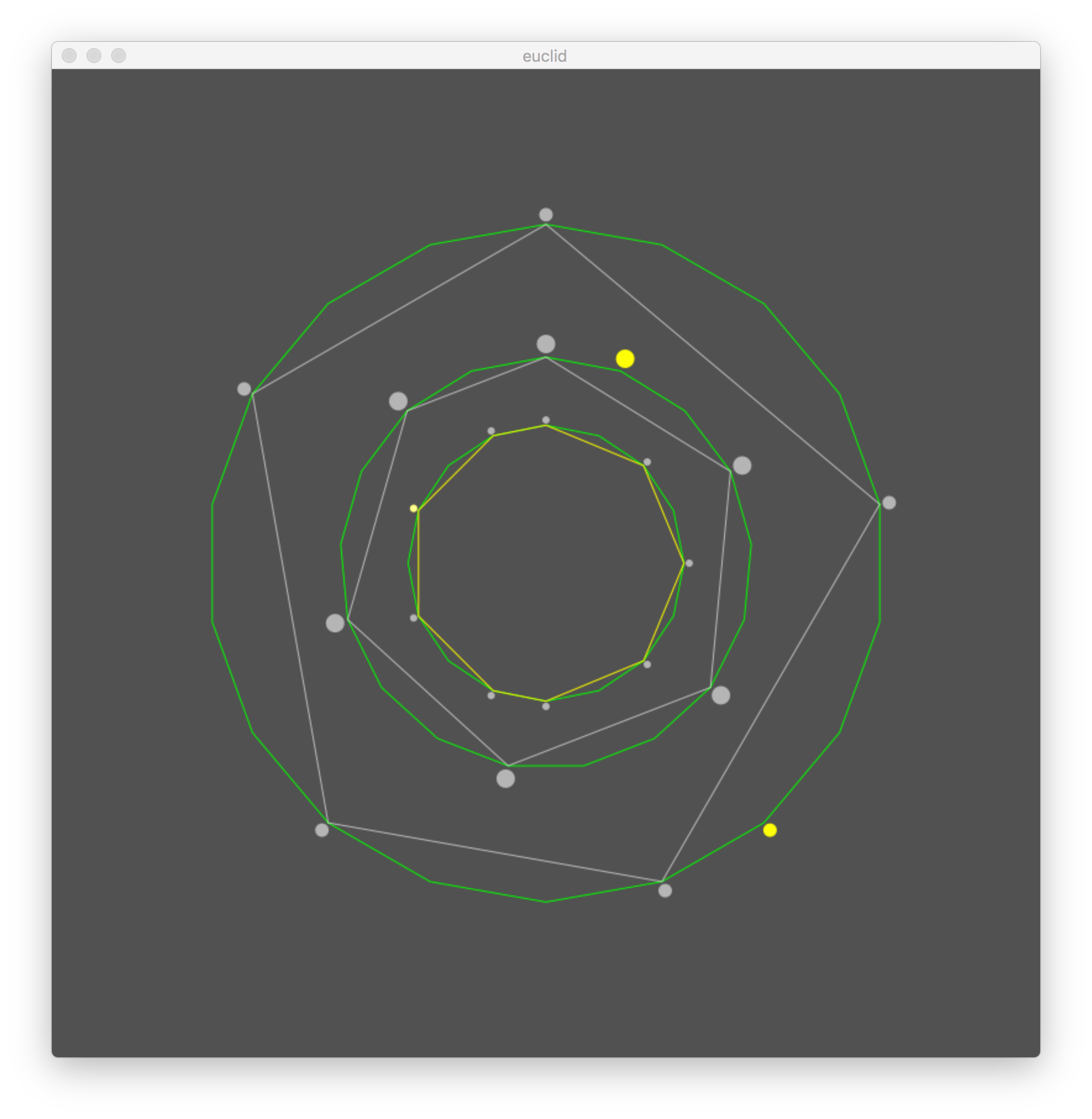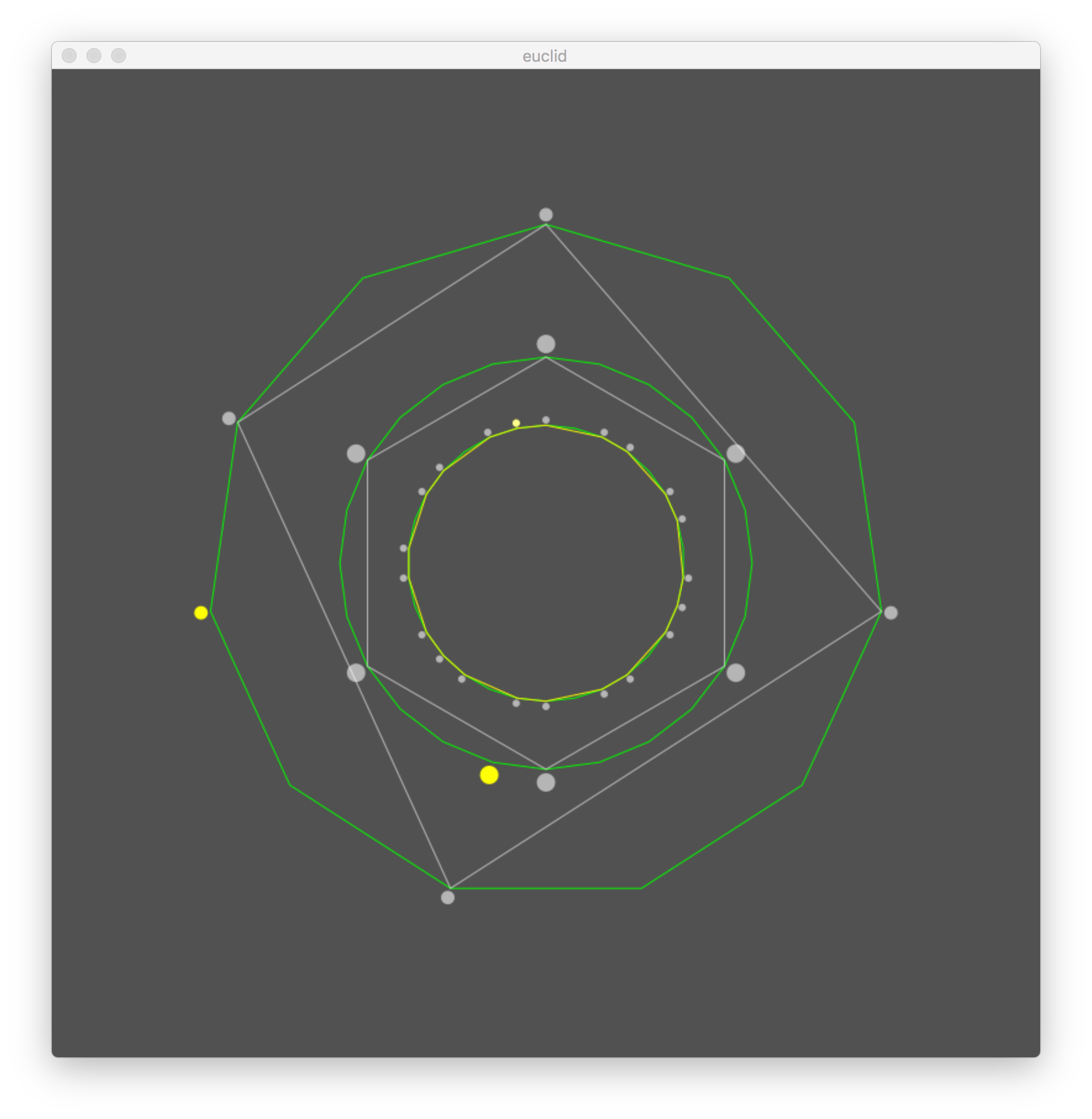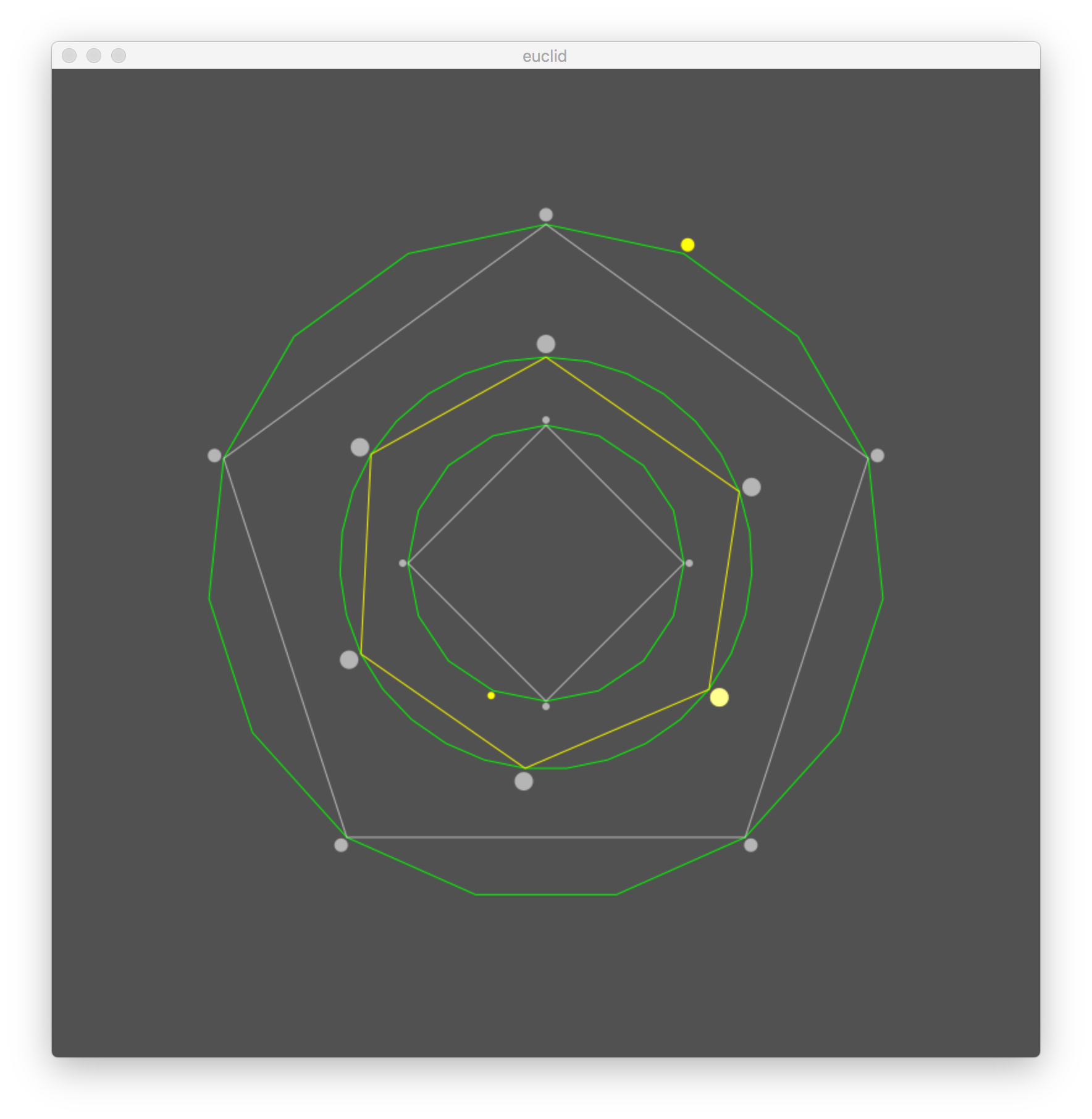Rhythm Studies (2017-18)
During my 2017-18 sabbatical, I developed a piece of software for composing rhythms, largely based on the ideas
presented in Godfried T. Toussaint’s book The Geometry of Musical Rhythm. One of the featured techniques in the
book is the application of the Euclidean algorithm. For instance, the aim is to distribute onsets (hits) among
pulses (steps) as evenly as possible.
While the use of the euclidean algorithm is not a new idea in music composition, my software provides the means to input any combination of onsets and pulses
with calculation of the Euclidean rhythm accompanied by a graphic representation of the onset and pulse geometries. This allows for the fast creation of polymetric polyrhythms. It also allows overrides for onsets and pulses, setting individual onset velocities (strength of hit), and other
customizations. My variation on Toussaint’s main concept is to go beyond one rhythmic stream by providing several. Each can have its own number of pulses and onsets.
Data from my software can be sent to any software application that accepts MIDI inputs. While drum and percussion
tracks are the obvious target, the data is useful for any type of sequencing.
